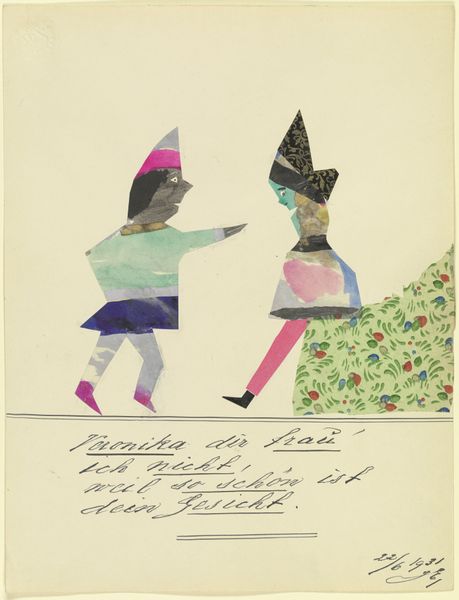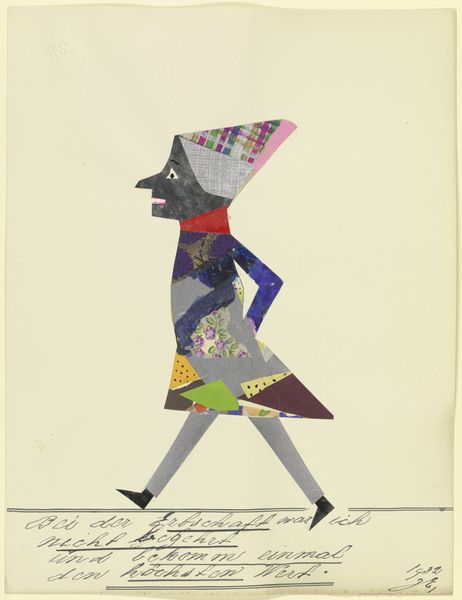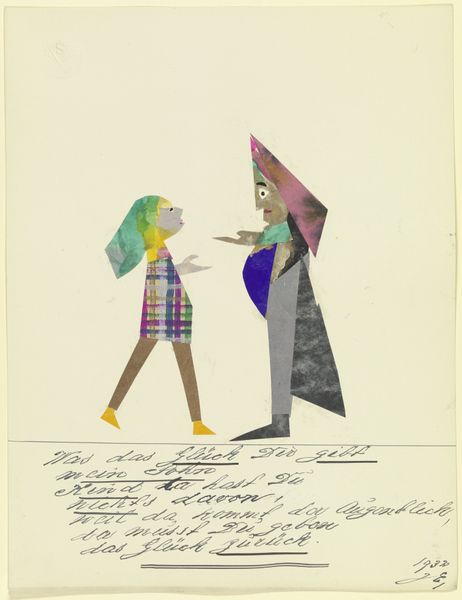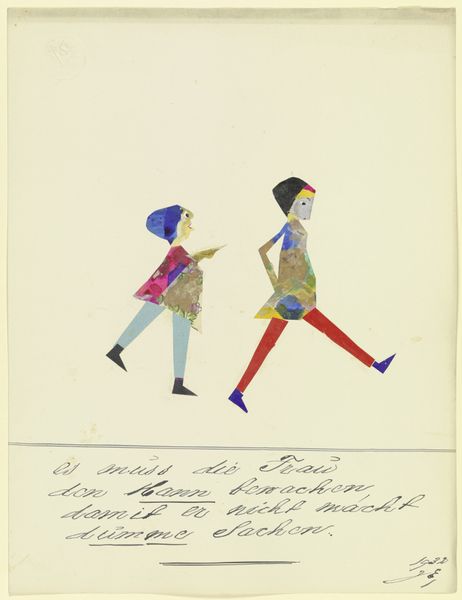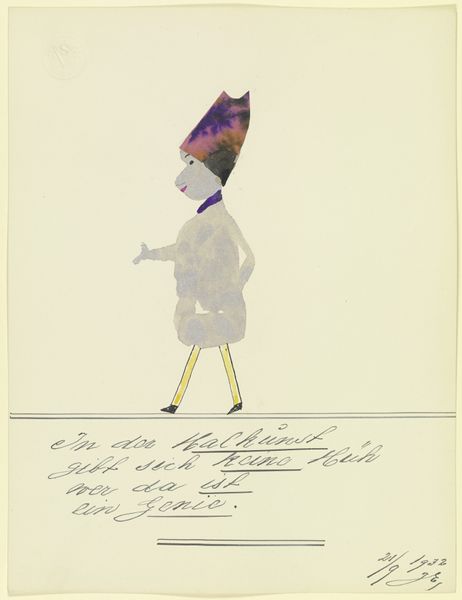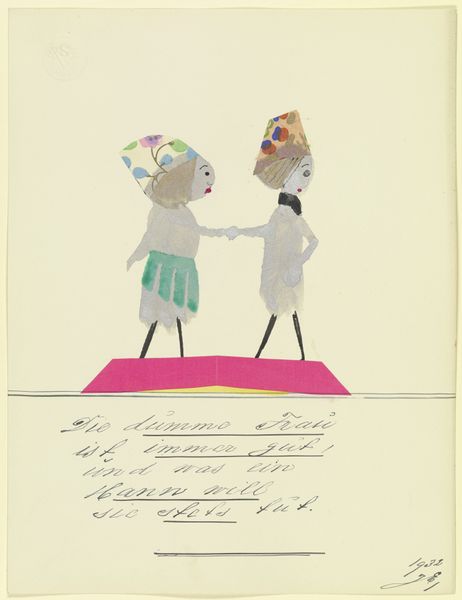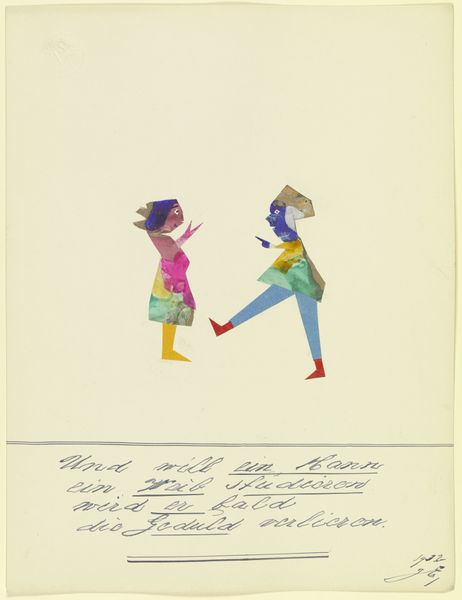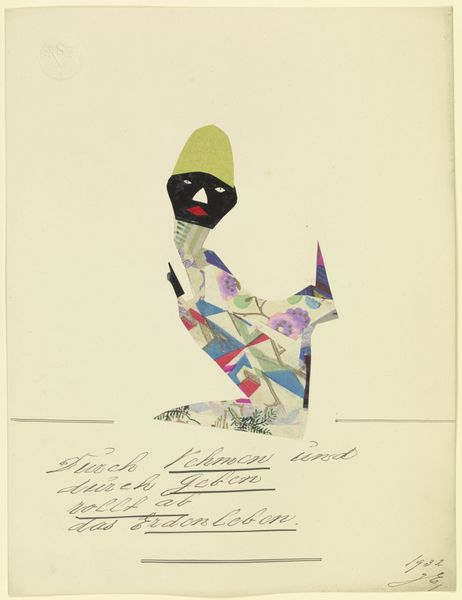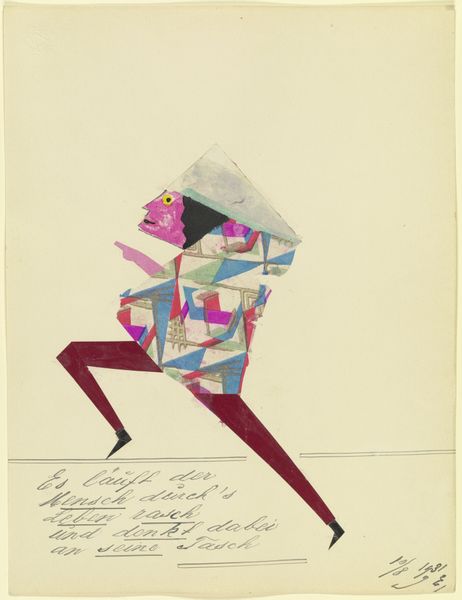
Copyright: Public Domain
Curator: This peculiar collage is by John Elsas, created in 1932. Its title, according to the artist, is "17357 (_The mother says …_)." The work at the Städel Museum employs ink, gouache, and paper. Editor: The angularity strikes me first—these figures, almost puppet-like, command attention, while their pastel coloration lends an unusual air of tenderness. It's a very odd but pleasing composition. Curator: Yes, Elsas's application of geometric shapes overlaid with abstract, almost Expressionistic fields of color to form figures is noteworthy. Consider how he balances precise lines with the chaotic texture within each shape. Editor: Do you think that tension between order and chaos reflects broader anxieties of the time, perhaps the pre-war unease or shifting social structures? Given the suggestive title it implies conflict. Curator: Potentially. In this period, particularly within modernist movements, such fragmented representation often conveyed disillusionment with established societal norms. Observe how each figure walks confidently, yet there’s a disconnect—their paths may not converge, symbolized by the space between them. Editor: And their slightly different skin tone may point to a broader discussion around race, eugenics and equality... Maybe it also emphasizes their difference... or perhaps I am looking too deeply... Curator: It would be negligent not to make an inquiry. That inscription below also calls our attention... A fragment of a statement implying further explanation which requires its own deeper study. The artwork is, in many ways, about implication rather than declaration. Editor: It definitely speaks volumes. An example of how potent suggestion can be. Curator: I agree entirely. The artwork allows viewers to feel like they are a part of creating the full message which the collage hints. It stays with you long after you've moved on. Editor: A truly succinct demonstration of the complexity we have been exploring—social, psychological and, in particular, structural complexity within the simple guise of Expressionist forms. Thank you, John Elsas.
Comments
No comments
Be the first to comment and join the conversation on the ultimate creative platform.
